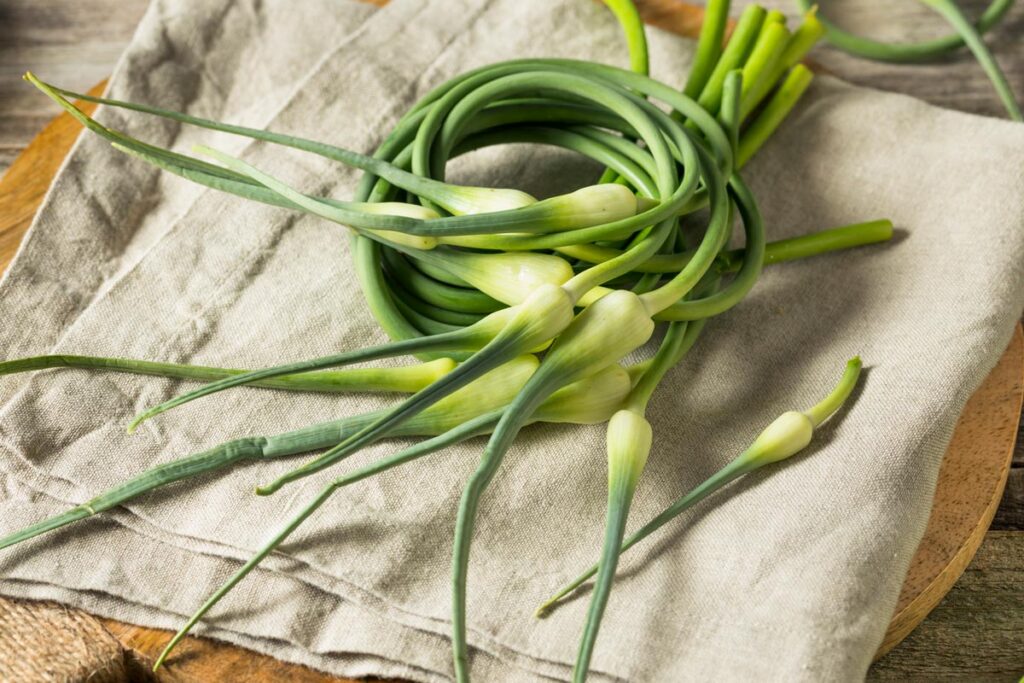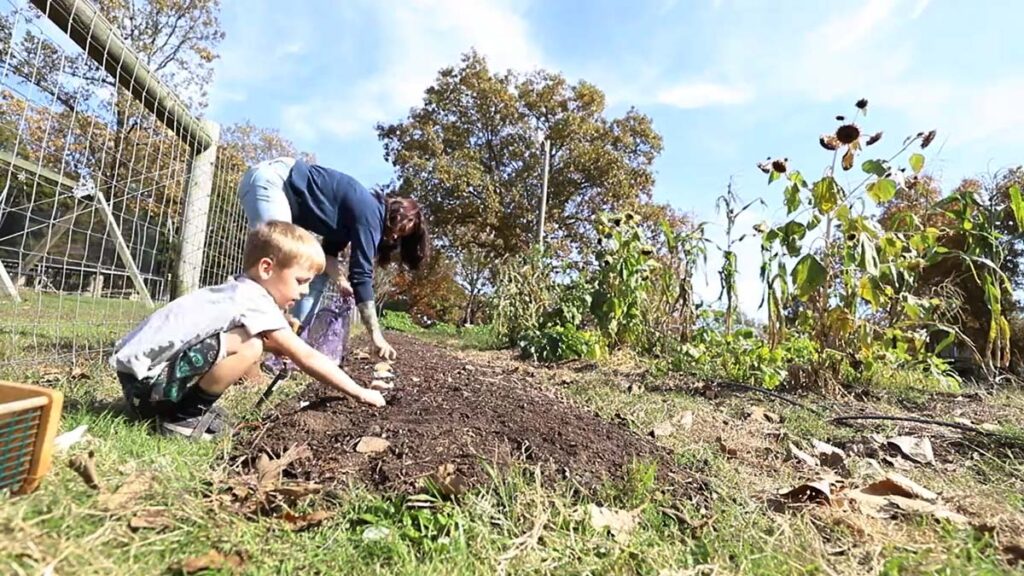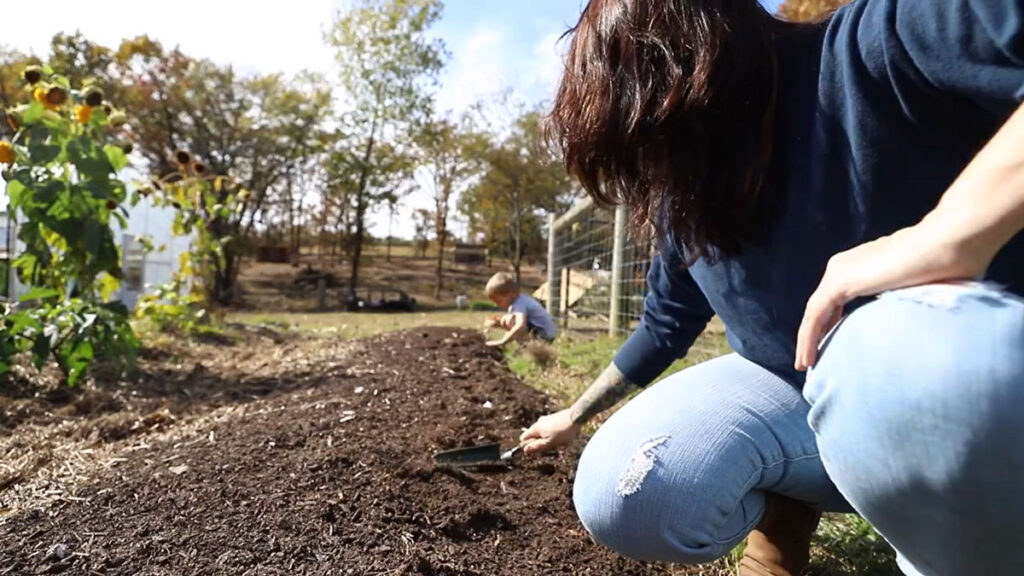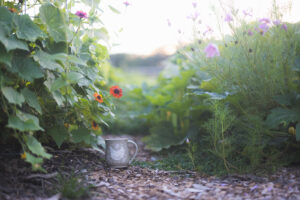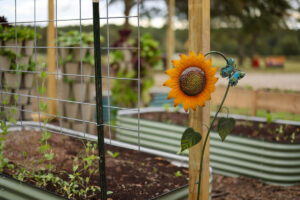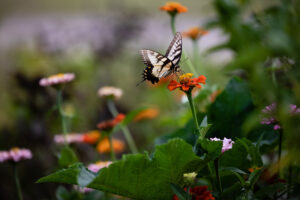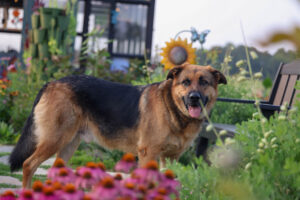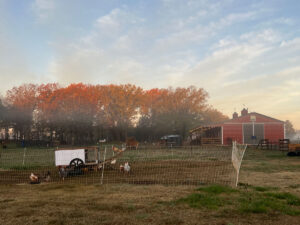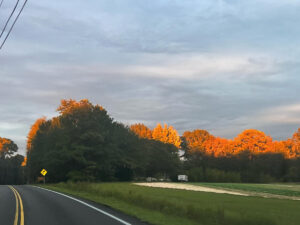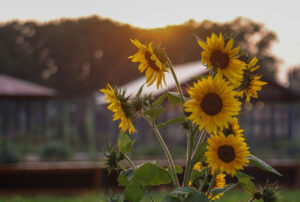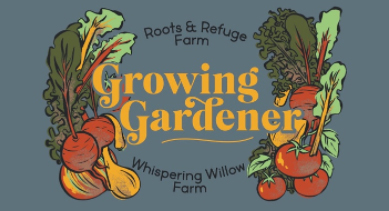Depending on your zone, you can plant and grow a seed garlic bulb in early or late fall. Read on to learn how to plant garlic the best way to see sprouts pop up come spring! Plus I’ll teach you about garlic’s lesser-known mammoth cousin, elephant garlic, along with my favorite places to source seed garlic.
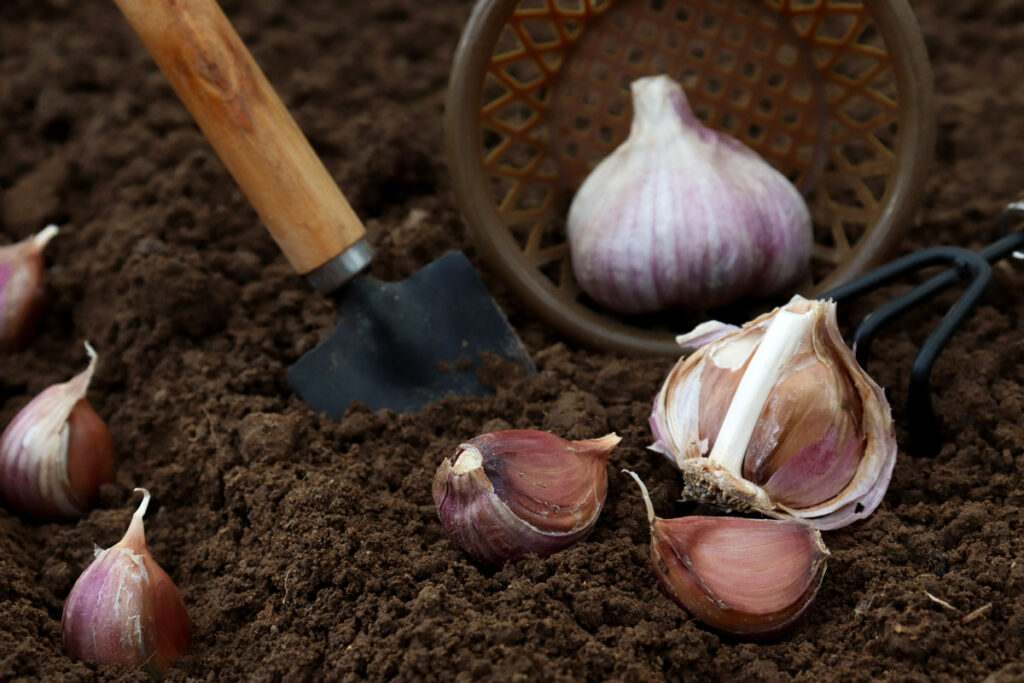
Why You Should Learn How to Plant Garlic
Learning how to plant garlic will save you money, but did you know there are also many other benefits?
- Garlic is incredibly easy to grow.
- It requires minimal effort to plant and maintain.
- Garlic is a hearty crop that resists pests and diseases well.
- It uses a relatively small space to grow a substantial crop.
- Garlic grows over the winter when most home gardens are otherwise dormant.
- Growing your own garlic provides more variety options than the one or two varieties available in grocery stores.
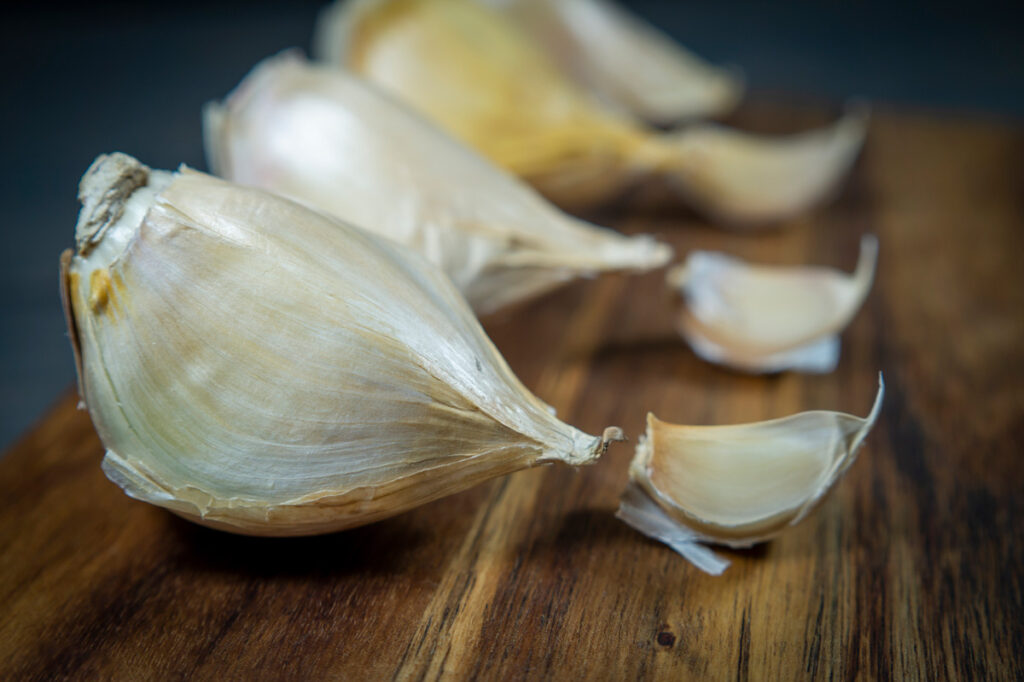
Garlic Vs. Elephant Garlic
Elephant garlic lives up to its name where size is concerned. Its considerable bulbs are three or four times as big as garlic bulbs (see photo above).
It is in the Allium family with onions, garlic, and leeks, yet it is not true garlic. This colossal cousin to garlic has a sweeter, mild garlicky flavor without the bite. I would describe the taste as a mix of shallot and garlic.
Elephant garlic does grow the same way as true garlic, allowing you to follow the same step-by-step instructions below.
Elephant garlic is a fun addition to any garden. I use it in the kitchen when I don't want the garlic flavor to overpower the other flavors in a dish. Try it in my Incredibly Basic Farmhouse Quiche Recipe, or toss some in the pan next time you make a Spatchcock chicken.
The large bulbs mean you can substitute fresh minced garlic with elephant garlic in your recipe with a fraction of the prep time.
Hardneck Varieties and Softneck Varieties
Garlic is divided into two separate varieties, and each has specific benefits.
Hardneck Garlic
Hardneck varieties of garlic have a stronger flavor, larger cloves, and are the easiest to peel.
Softneck Garlic
Softneck varieties are likely what you have purchased at the grocery store. The scapes are strong enough to braid for long-term storage, they store for longer periods of time and are a milder flavor.
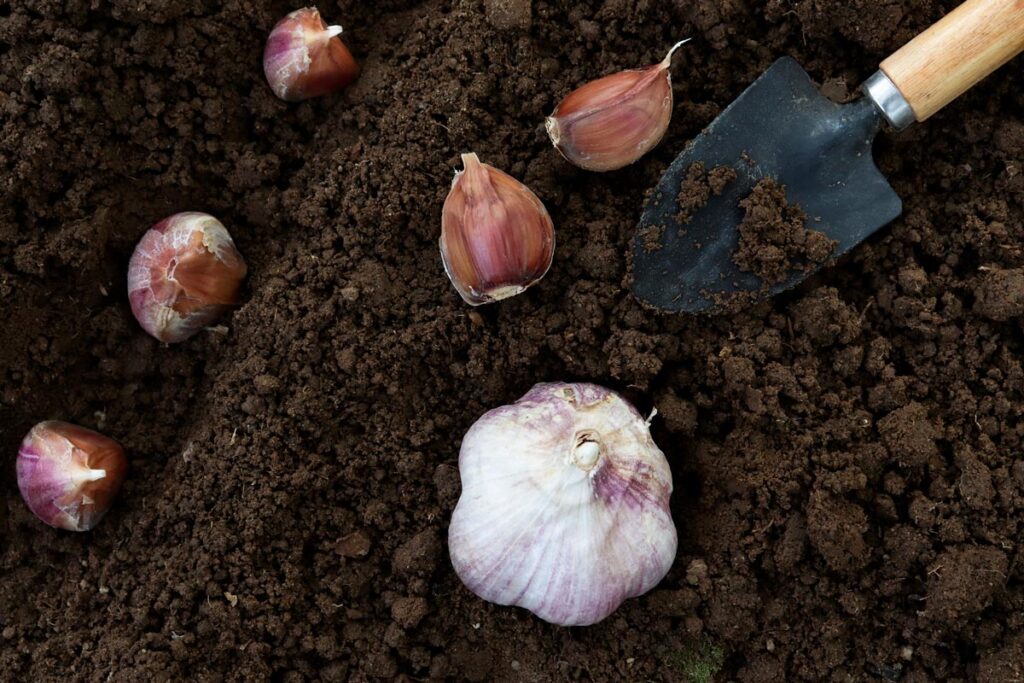
Where to Find Seed Garlic
I often get my seed garlic from MI Gardner or Baker Creek Heirloom Seeds. To avoid places being sold out, I recommend ordering early.
You may wonder, “can garlic be grown from a clove I purchased at the store?” and you absolutely can try to grow garlic from a head of store-bought organic garlic.
Just keep in mind that store-bought varieties are limited, and you will have more variety options from other sources.
To learn more about re-growing garlic and other crops from the grocery store, check out this post on growing a garden from grocery store food.
Elephant garlic can be a little harder to source. I get my elephant garlic seed bulbs from Baker Creek Heirloom Seeds and Hoss Tools.
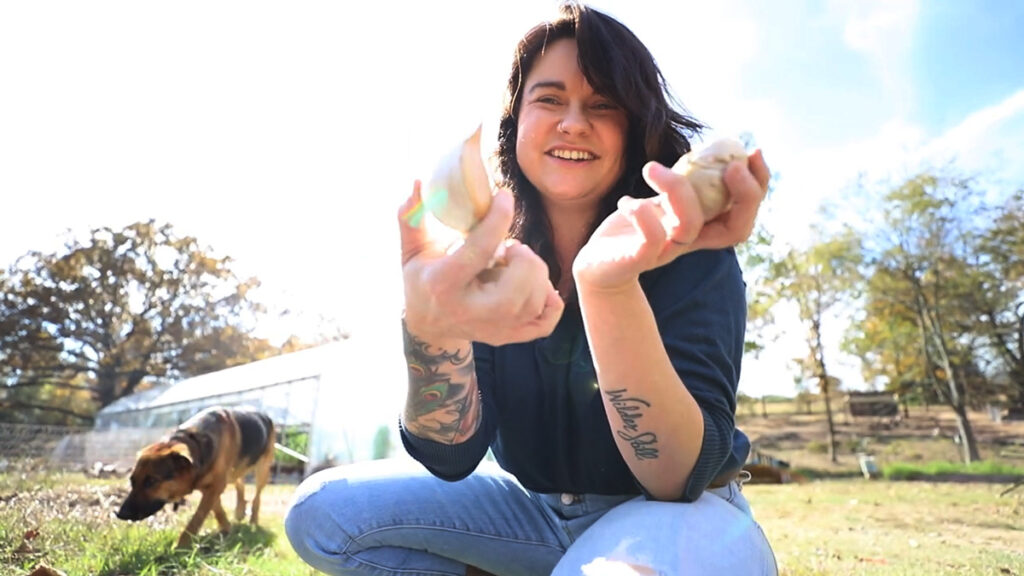
What is the Best Month to Plant Garlic
In my zone (zone 8), early November is my favorite time to plant garlic. This allows the garlic time to get established before the winter gets too cold. Additionally, I get an early garlic harvest the next year.
That should be true for the warmer zones (6 and above), where the ground usually doesn’t freeze solid in the winter. Go ahead and plant if November has already passed you by. I have planted garlic all through the winter, even as late as January.
Garlic should be planted earlier in zones 5 and below where the ground freezes. The beginning of October is ideal, especially if you are planting in raised beds.
After you plant your garlic in a cold zone, cover it in a generous layer of mulch such as straw or a thick layer of dried leaves.
How to Plant Garlic
- Choose and Prep Your Garden Space – All varieties of garlic prefer full sun (or at least 6-8 hours of exposure per day). We chose a garden area that was done producing, pulled out the old plants, used our chickens to clean and fertilize the area, and kept it covered with landscape cloth to keep out weeds until we were ready to plant. Garlic, especially elephant garlic, will produce tall plants. Keep that in mind so that you don’t plant them in an area where they will shade your other plants, or when planting multiple varieties side by side.
- Prepare the Soil- Add a couple of inches of compost.
- Prepare the Seed Garlic– Break the bulbs apart into individual cloves. Be careful not to remove the papery wrapper; it protects the garlic. I don't bother to plant any cloves that are missing the wrapper. It's not likely they will produce a bulb.
- Dig the Holes– Dig holes at regular intervals spacing regular garlic 10 cm apart (about 4 inches) and elephant garlic about 15 -20 cm apart (about 6 to 8 inches). The holes should be deep enough to cover the cloves with about two inches of soil.
- Planting the Garlic – Plant each clove with the pointy end up towards the sky. The flat, rough bottom is where the roots will grow out. Place one clove in each prepared hole, and cover with soil.
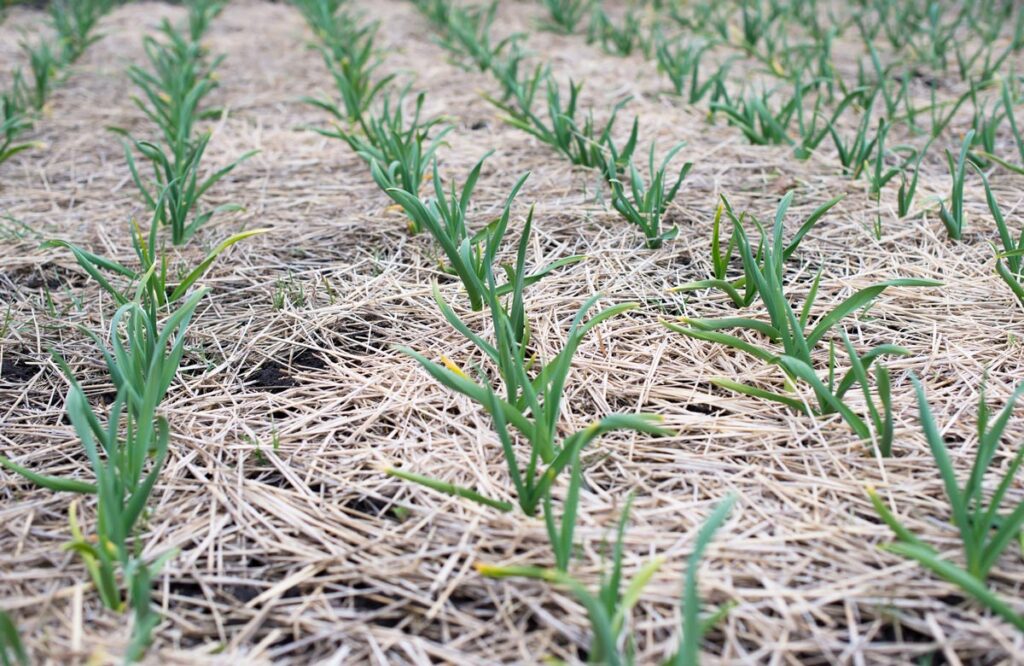
How Long Does Garlic Take to Grow
Garlic will be ready to harvest in early summer the following year. A good indication to watch for is the scapes will start to turn yellow. Stop watering the garlic at this point and wait one to two weeks before harvesting. This will allow the bulbs to firm up and be ready to pull out of the ground.
In the video Monster Garlic and This Little Piggy, you can watch me harvest my elephant garlic. I also share tips on preparing garlic sprouts (garlic scapes) and what to do with your garlic harvest.
